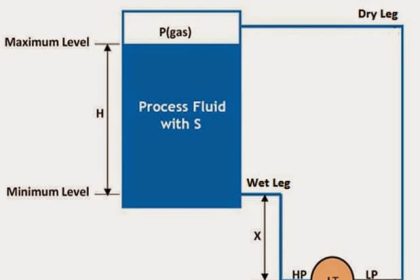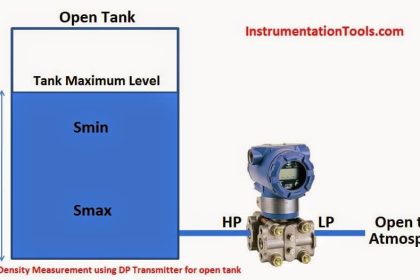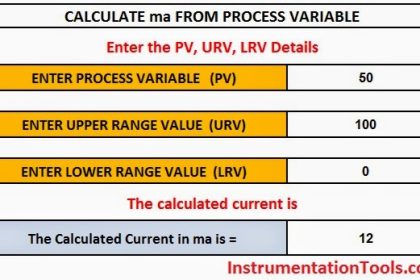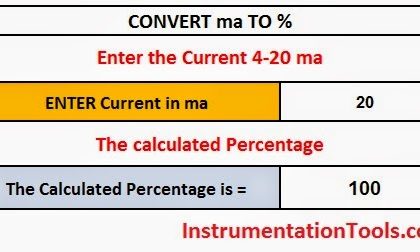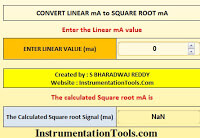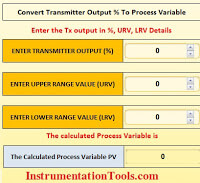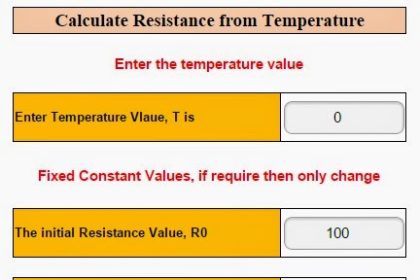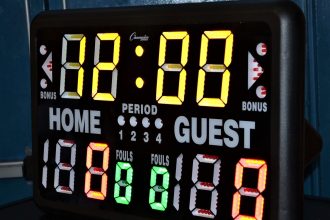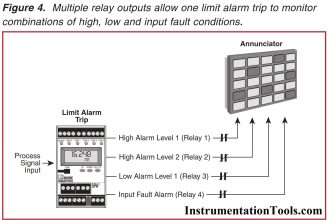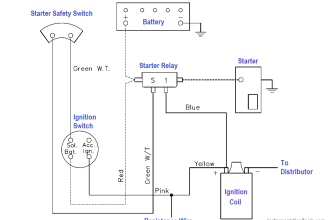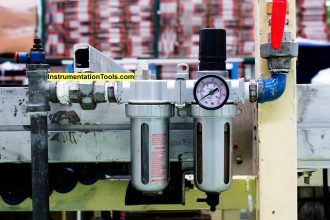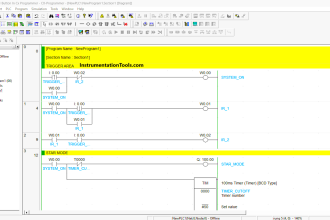In industrial automation, analog signals play a critical role in interfacing real-world measurements with digital systems like PLCs, DCS, and SCADA. The most widely used standard for transmitting these analog values is the 4-20 mA current loop. However, engineers often work with physical values such as temperature, pressure, level, or flow, which must be translated into corresponding current signals to interface with controllers.
Objective
This tool is designed to convert a given measurement value into its corresponding analog signal in the 4-20 mA range. This is especially useful in industrial automation where PLCs, transmitters, sensors, and SCADA systems interface using standardized current signals.
Measurement to 4–20 mA Converter
Measurement Value to 4-20mA Signal Formula
To convert a process measurement value into a 4–20 mA signal:
mA = 4 + ((Measurement Value – Min) / (Max – Min)) × 16
Where:
- Measurement Value is the actual input from the field or process.
- Min and Max are the engineering range values corresponding to 4 mA and 20 mA respectively.
- The result will be the equivalent analog current signal.
Key Terms Explained
- 4–20 mA Signal: Industry standard analog signal range used for transmitting real-world values like temperature or pressure.
- Measurement Value: Real-time process value such as flow, level, or weight.
- PLC/DCS: Controllers used to receive and interpret analog signals in industrial systems.
- Transmitters/Sensors: Devices that convert physical variables to proportional electrical signals.
Use Cases
- Converting a pressure reading into a PLC-friendly 4–20 mA signal.
- Sending a temperature value from a sensor to SCADA.
- Control valve positioning based on flow rate.
- Converting tank level for a remote HMI display.
- Calibrating a transmitter using field-simulated process values.
- Testing signal range on analog input channels of PLCs.
How to Use?
- Enter the process value (e.g., temperature, pressure).
- Input the minimum and maximum engineering scale.
- Click “Calculate” to get the corresponding 4–20 mA current signal.
Detailed Example Calculations for Beginners
Here we show you some basic calculations related to the process variable to the equivalent 4-20 mA conversion tool.
- PLC Analog Input Scaling
- Temperature Sensor to PLC Input Module
- Control Valve Travel Feedback
- Flow Transmitter in Water Supply System
- Weight Transmitter for Batching
- SCADA System Monitoring Humidity
- Chiller Outlet Temperature Feedback
- Fuel Tank Level Measurement to DCS
- Turbidity Monitoring System
- Steam Boiler Pressure Transmitter
- Compressor Vibration Sensor
- Differential Pressure Flow Transmitter for Air Duct
PLC Analog Input: Level Transmitter Scaling
Question: A PLC receives a 13.6 mA current signal from a level transmitter configured for a 0–5 meter tank. What is the tank level?
Answer:
Level = 0 + ((13.6 – 4) / 16) * (5 – 0)
Level = (9.6 / 16) * 5 = 0.6 * 5 = 3.00 meters
Temperature Sensor to PLC Input Module
Question: A temperature sensor scaled for –50 to 150 °C gives a reading of 85 °C. What is the 4–20 mA output?
Answer:
mA = 4 + ((85 – (-50)) / 200) * 16 = (135 / 200) * 16 + 4 = 14.8 mA
Control Valve Travel Feedback
Question: A control valve gives a 40% stem position, range 0–100%. What current signal will it send to the PLC?
Answer:
mA = 4 + ((40 – 0) / 100) * 16 = (40 / 100) * 16 + 4 = 10.4 mA
Flow Transmitter in Water Supply System
Question: Flow rate of 300 LPM from a flow meter scaled 0–1000 LPM. What is the 4–20 mA output?
Answer:
mA = 4 + ((300 – 0) / 1000) * 16 = (300 / 1000) * 16 + 4 = 8.8 mA
Weight Transmitter for Batching
Question: A 2500 kg silo weight transmitter is scaled 0–5000 kg. Current reading = 2500 kg. Find 4–20 mA value.
Answer:
mA = 4 + ((2500 – 0) / 5000) * 16 = (0.5) * 16 + 4 = 12.0 mA
SCADA System Monitoring Humidity
Question: Humidity transmitter shows 60% RH with 0–100% scaling. Find current signal.
Answer:
mA = 4 + ((60 – 0) / 100) * 16 = (0.6) * 16 + 4 = 13.6 mA
Chiller Outlet Temperature Feedback
Question: A temperature transmitter reads 8 °C from a range of –10 to 30 °C. Find 4–20 mA signal.
Answer:
mA = 4 + ((8 – (-10)) / 40) * 16 = (18 / 40) * 16 + 4 = 11.2 mA
Fuel Tank Level Measurement to DCS
Question: Fuel level is 1200 mm. Transmitter scaled for 500–2000 mm. What is the 4–20 mA signal?
Answer:
mA = 4 + ((1200 – 500) / 1500) * 16 + 4 = (700 / 1500) * 16 + 4 = 11.47 mA
Turbidity Monitoring System
Question: Turbidity reading = 130 NTU. Range: 0-200 NTU. What current signal will the transmitter generate?
Answer:
mA = 4 + ((130 – 0) / 200) * 16 = (0.65) * 16 + 4 = 14.4 mA
Steam Boiler Pressure Transmitter
Question: Pressure = 12 bar, range = 5–15 bar. Find the current output of a 4-20 mA transmitter?
Answer:
mA = 4 + ((12 – 5) / 10) * 16 = (7 / 10) * 16 + 4 = 15.2 mA
Compressor Vibration Sensor
Question: Reading = 25 mm/s. Sensor range: 0-50 mm/s. Calculate the analog current output.
Answer:
mA = 4 + ((25 – 0) / 50) * 16 = 0.5 * 16 + 4 = 12.0 mA
Differential Pressure Flow Transmitter for Air Duct
Question: DP = 2.5 kPa, range = 0–5 kPa. 4–20 mA loop-powered transmitter. Find the current signal?
Answer:
mA = 4 + ((2.5 – 0) / 5) * 16 = 0.5 * 16 + 4 = 12.0 mA
Conclusion
This Measurement to 4–20 mA Converter is a must-have tool for control system engineers, instrument technicians, and automation professionals. Whether you’re designing loops, calibrating instruments, or troubleshooting analog signals, this tool ensures your calculations are fast, accurate, and hassle-free.
